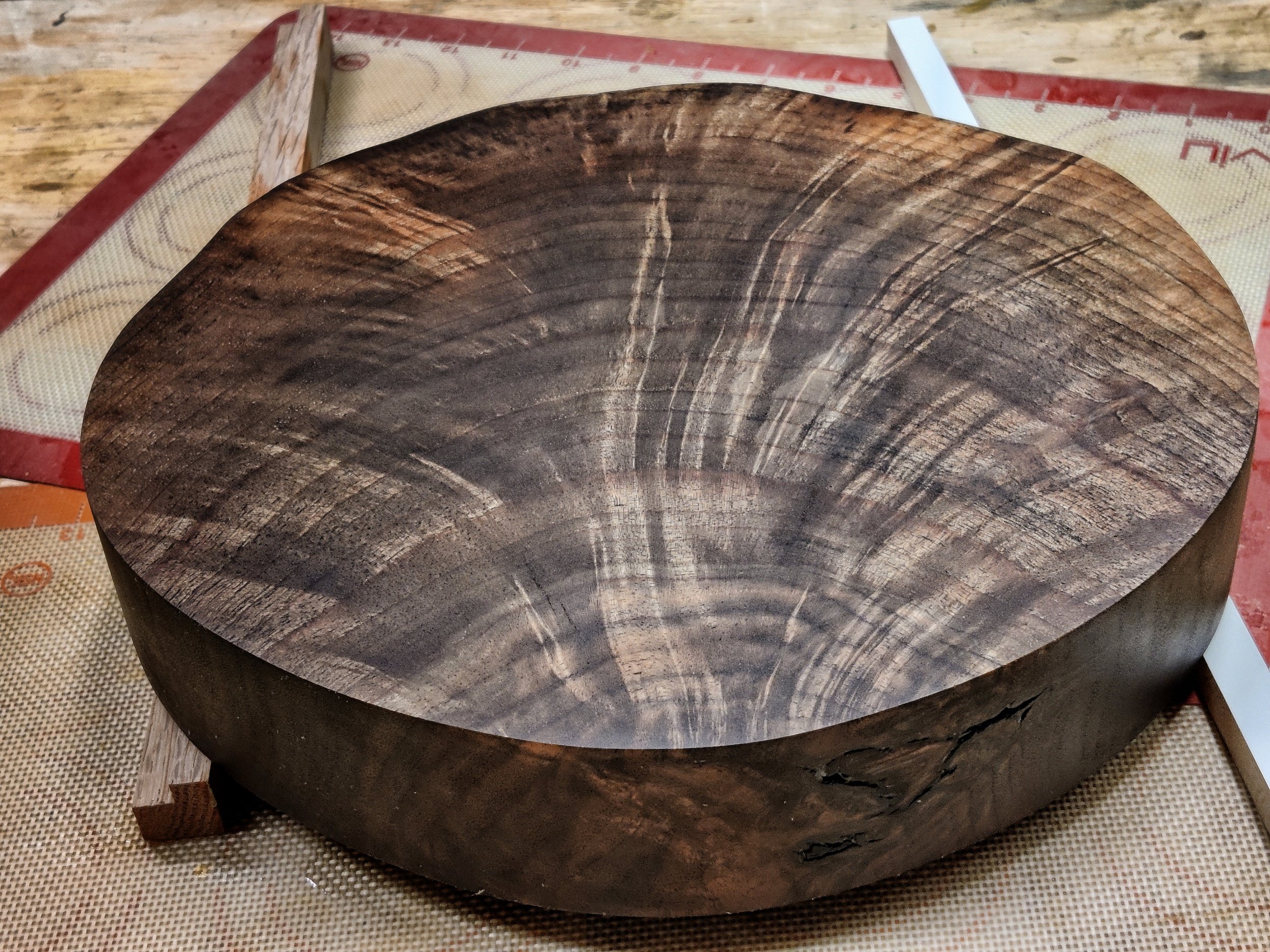What is Chatoyancy?
Ever look at a really cool piece of wood and notice how it is shimmery or wavy? Ever wonder what that is? It is called chatoyancy, fancy right?
Chatoyancy is the visual effect when a two dimensional object looks three dimensional because of the coloring or properties of the piece. It can be found in various materials such as stones, gems, and wood, such as this piece of black walnut I was recently working with.
Why is there chatoyancy in wood and what causes it?
Long story short, the crotch of a tree has grain going in various directions which can cause chatoyancy as end grain and long grain catch light differently, long grain catching less than end grain, resulting in the ribboning of colors. If you want to know more about why this phenomenon happens and what is causing the tree to create this effect, read on.
In this case this walnut wood is from the crotch of a tree. The crotch is where two major limbs branch off from the trunk. As you can imagine, this section of tree bears a lot of weight, quite literally, as the two limbs with branches and all of those leaves are held together at the crotch with all of the weight of the tree trying to rip the tree in two. Because of this, the tree grows with what’s called cross grain where one branch will grow into the other side and vice versa, thereby making connections across the grain.
If you need a visual, put your palms together and line your fingers up so your hands are pointed straight up. Now interlock your fingers. Then spread your elbows out and try to pull your hands apart. That’s basically what’s happening to the tree, but upside down. Your arms being the limbs, your hands are the crotch of the tree, and the trunk is imaginary, in the space above your hands. When your fingers are engaged together you cannot rip your hands apart, but if you put your fingers and palms flat against each other they are easily separated.
Gravity is pull down, using the weight of the tree against itself to try to rip it in half down the trunk. The tree is fighting with all it’s might by creating strong, cross grain connections. This cross grain pattern is what we see and call chatoyancy.
Simply put, it is end grain poking out in between face grain. Wood grain is like a bunch of straws, meaning there are holes which catch and absorb the light in the end grain. The face grain is the side of the straw which reflects the light back, creating the lighter parts of the wood, contrasting with the dark parts of the end grain, causing chatoyancy.
Pretty cool if you ask me.

